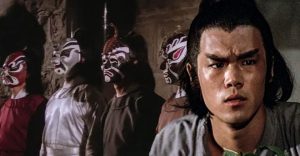D&D: New Dragonlance Backgrounds & Feats

The latest Unearthed Arcana article for Dungeons & Dragons is called “Heroes of Krynn” and it features playtest rules for Backgrounds and Feats related to Krynn, suggesting that the Dragonlance campaign setting is returning to D&D. The Knights of Solamnia and the Mages of High Sorcery from the Dragonlance setting have been redefined as Backgrounds and Feats, as they refer to social standing and membership in a group, which enhances their class abilities but doesn’t define them in the same way that it did in the older editions of D&D.
Dragonlance is set in the fantasy world of Krynn. At the start of the Dragonlance novels, the world was in turmoil, following an apocalyptic event known as the Cataclysm, which was followed by the gods no longer answering prayers. It was during the tumultuous era that followed that the honorable Knights of Solamnia fell into disarray, while spellcasters were treated as outcasts in many communities. The novels showed the events of the War of the Lance, which resulted in the Knights of Solamnia regaining much of their lost power, while wizards slowly earned acceptance. This was slowed by the actions of a mage named Raistlin Majere, whose attempts to become a god almost doomed the world.
The Heroes of Krynn Unearthed Arcana article has options to help players create an honorable knight or a powerful mage, but it also has two D&D Feats for divine spellcasters. Divinely Favored grants the thaumaturgy cantrip and a spell that depends on the caster’s alignment. An evil character chooses a level one warlock or wizard spell, a good character chooses a level one cleric or wizard spell, and a neutral character chooses a level one druid or wizard spell. A level four character with this Feat can select the Divine Communications Feat, which grants +1 to Intelligence, Wisdom, or Charisma, as well as three bonus languages, one of which has to be Celestial. The Feat also grants the Divine Omens ability, which adds the augury and commune spell to their list and they can be cast without using a spell slot, but it takes 1d4 long rests to refresh the ability. These are fairly generic Feats for divine spellcasters that could fit into any D&D setting, while the remaining content is directly linked to the Dragonlance setting.
The Knights Of Solamnia Background & Feats In D&D

The Knights of the Solamnia are an order of warriors who live by a strict code of honor and protect the people of Krynn from evil forces. They are as much a political entity as they are an order of warriors, which is why it’s fitting that they are now defined through resources outside of a character class. In the Heroes of Krynn article, the Knights of Solamnia are now broken down into a Background and several Feats.
The Knight of Solamnia Background grants the Athletics and Survival skill proficiencies, a tool proficiency in a musical instrument, a bonus language, some basic gear, and the Squire of Solamnia Feat. The Background states that any martial class would be a good fit to become a Knight of Solamnia, but this is not a requirement, and even barbarians in D&D can join the order, so long as they match its beliefs. The Squire of Solamnia Feat grants proficiency in all martial weapons and medium armor and grants advantage on saving throws to avoid being dismounted. The Feat also grants the Encouraging Rally feature, where the character can use their reaction to give an ally within 30ft advantage on a saving throw, which can be used once per long rest.
The Squire of Solamnia Feat is a requirement for three other Feats, all of which cannot be taken until the character hits level four, at which point, they should have proven their worth to the order. The Knight of the Crown Feat grants +1 to Strength or Dexterity and gives the character the Tactical Teamwork Feat, allowing them to grant advantage on an attack roll to an ally that is attacking the same foe. This can be used a number of times equal to proficiency bonus and refreshes on a long rest.
The Knight of the Sword Feat grants proficiency in Intelligence, Wisdom, or Charisma saving throws and gives the character the Willpower ability, allowing them to spend Hit Dice to grant an ally within 30ft a bonus on a failed Intelligence, Wisdom, or Charisma saving throw. This can be used once per long rest. The Knight of the Rose Feats grants +1 to Constitution or Charisma and gives the character the Bolstering Rally ability, allowing them to grant temporary hit points to three allies within 30ft when the group rolls initiative. The hit points are equal to a Hit Die plus proficiency and either their Constitution or Charisma modifier. This can be used a number of times equal to proficiency bonus and refreshes on a long rest.
The Mages Of High Sorcery Background & Feats In D&D

The Mages of High Sorcery used to be known as the Wizards of High Sorcery in the days of AD&D, but the number of new D&D spellcasting classes introduced in later editions means that they have rebranded and allow different kinds of members. The mages of Krynn all belonged to one of the three Orders of High Sorcery, which were usually tied to alignments. The three orders were the evil Black Robes, the neutral Red Robes, and the good White Robes. These alignment restrictions aren’t quite as strict in 5e, though they are still part of the game.
Like the Knights of Solamnia, the Mages of High Sorcery are defined by a Background and several Feats. The Mage of High Sorcery Background grants the Arcana and History skill proficiencies, two languages, some basic equipment, and the Initiate of High Sorcery Feat. Those who select this Feat choose from one of the three Moons of Krynn: Nuitari, Lunitari, and Solinari. Choosing Nuitari grants either chill touch, mage hand, or vicious mockery, as well as a first level evocation or Necromancy spell. Choosing Lunitari grants either guidance, message, or prestidigitation, as well as a first-level divination or transmutation spell. Choosing Solinari grants either produce flame, resistance, or spare the dying, as well as a first-level abjuration or conjuration spell.
The Initiate of High Sorcery Feat is a requirement for three other Feats, all of which can be selected at level four. Adept of the Black Robes can only be chosen by non-good aligned characters, which is tailor-made for evil D&D characters in the party. They gain a second-level evocation or necromancy spell that can be cast once per long rest, as well as the Life Channel ability. This ability activates when a creature fails a spell saving throw, allowing the caster to expend hit dice to add damage to the effect, based on half of the result. Adept of the Red Robes has no alignment restrictions. They gain a second-level divination or transmutation spell that can be cast once per long rest, as well as the Magical Balance ability. This ability lets the character take any roll of a 9 or lower on a d20 during an attack roll, ability check, or saving throw, and turn it into a 10. Magical Balance can be used a number of times equal to proficiency bonus and refreshes on a long rest.
Adept of the White Robes can be chosen by non-evil aligned characters. They gain a second-level abjuration or conjuration spell that can be cast once per long rest, as well as the Protective Ward ability. This ability lets them use their reaction to burn a spell, in order to reduce the damage taken by an ally, by the total rolled on a number of d4s equal to the spell level, plus the caster’s spellcasting modifier.
There are some interesting aspects of these Feats, most notably that some of the mage ones have alignment restrictions, while the knight Feats do not. All of the content in Heroes of Kyrnn is playtesting material that is still being worked on. Much like how the Mages of Strixhaven were cut from D&D during development, the Knights of Solamnia and the Mages of High Sorcery may look very different in a published Dungeons & Dragons novel.
Source: Unearthed Arcana
About The Author


















